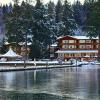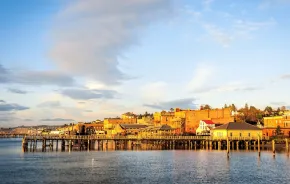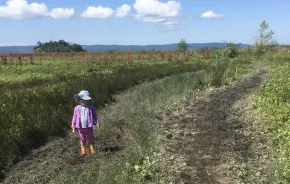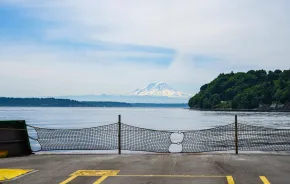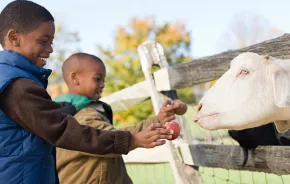
Like morning fog, dew-covered spider webs and giant falling maple leaves, spawning salmon are a distinctive part of fall in the Northwest. It is possible to witness salmon’s iconic journey without leaving the Seattle area. (For great salmon-spotting spots at urban creeks, check out this article.) But it’s worth taking the time to drive to one of our wilder places, where you can see bigger salmon runs and explore the whole habitat on which salmon depend.
Because it is an even-numbered year, pink salmon are taking the year off. These salmon, small but numerous, are sometimes called humpies for the striking hump that the males grow when they enter rivers. They spawn every two years in odd-numbered years. Mark your calendar for 2017 to check out some pinks on the go!
Here are some of our favorite wild places to see salmon run.
Newhalem, North Cascades National Park
- Where: Start at the North Cascades National Park Visitor Center, near the Newhalem Creek Campground (note: campground ic closed through 2016 season because of wildfire damage).
- Salmon of note: Sockeye, pink, chum, coho
- When: Through mid-November. Note: the Visitor Center is open weekends through Oct. 30 after which it closes for the winter
- Fee: None
Walk amid huge old-growth firs and cedars and watch salmon make their way through the clear, cold water of the glacier-fed Skagit River and Newhalem Creek. On odd-numbered years such as this one, there’s a big run of pinks in September, and both September and October are lovely in these forests. The ferns and moss that coat the trees spring back to life after the summer drought. Vine maples bring bursts of color; their leaves yellow in the shade and redden in the sun. And as the fall progresses, eagles gather along the river to feast on the flesh of spawned salmon.
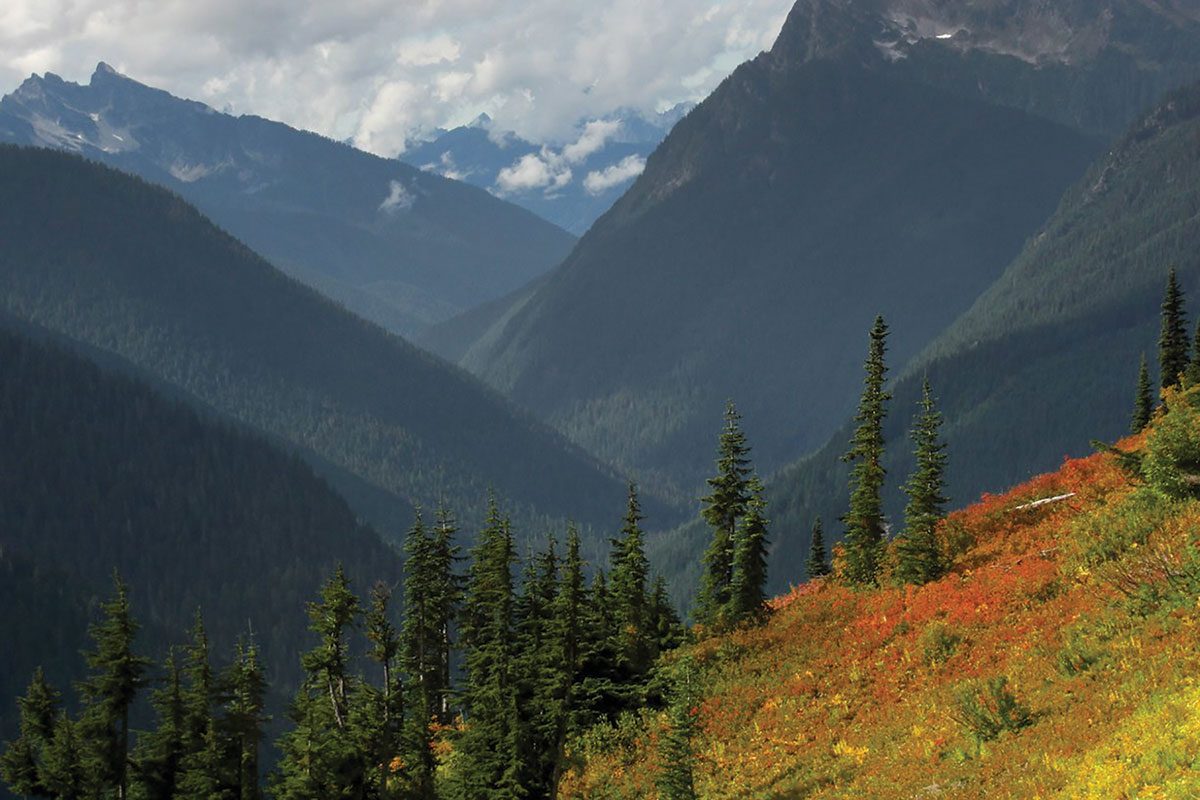
Old Sauk River Trail
- Where: Off the Mountain Loop Highway, near Darrington
- Salmon of note: Pink, coho, chum
- When: Late August through December
- Fee: Northwest Forest Pass
This kid-friendly trail goes for 3 miles through lichen-draped forests on the banks of the Sauk River, a clear, free-flowing river that is part of the Skagit Wild and Scenic River System. You
may not see many salmon compared with other destinations listed here, but there’ll be eagles aplenty and other river creatures, such as American dippers — songbirds that can walk and sometimes swim through rushing water. Because the trail is at a relatively low elevation, it is a fine walk for cold, wet days when other hikes lose their luster.
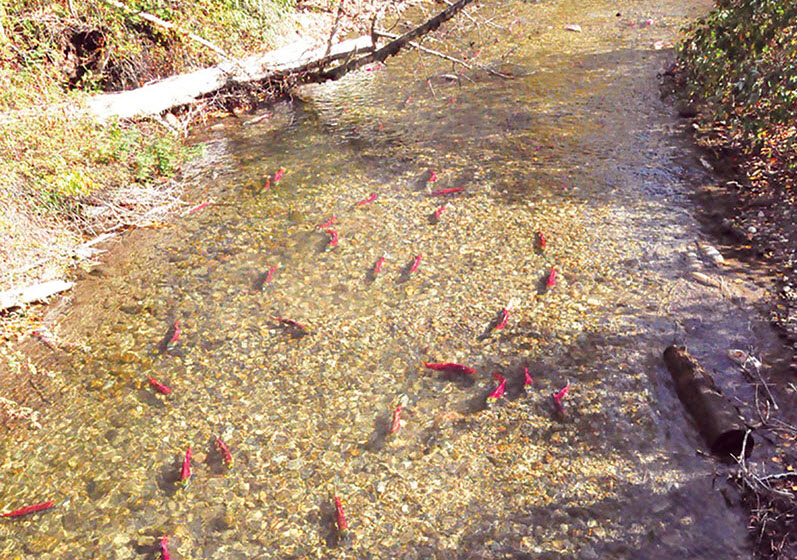
Adams River, B.C.
- Where: East of Kamloops, British Columbia
- Salmon of note: Sockeye
- When: October
- Fee: none
This is too far to go for a day trip from the Seattle area (it’s a five-hour drive at minimum), but if you are enchanted by fish and other natural wonders of our region, an Adams River trip deserves to be on your list, particularly during the one year in four — the next year is 2018 — when millions of bright red sockeye jostle for position. It’s a scene that some nature watchers have called one of the great migrations on earth. In 2015 — year two of the four-year cycle — the salmon journey will not be as dramatic as last year, but the numbers should still be in the hundreds of thousands (in 2016 and 2017, there will be far fewer). Roderick Haig-Brown Provincial Park is a particularly good spot to watch the drama. Consider camping in nearby Shuswap Lake Provincial Park’s campground (open through Oct. 12) or staying around Shuswap Lake.
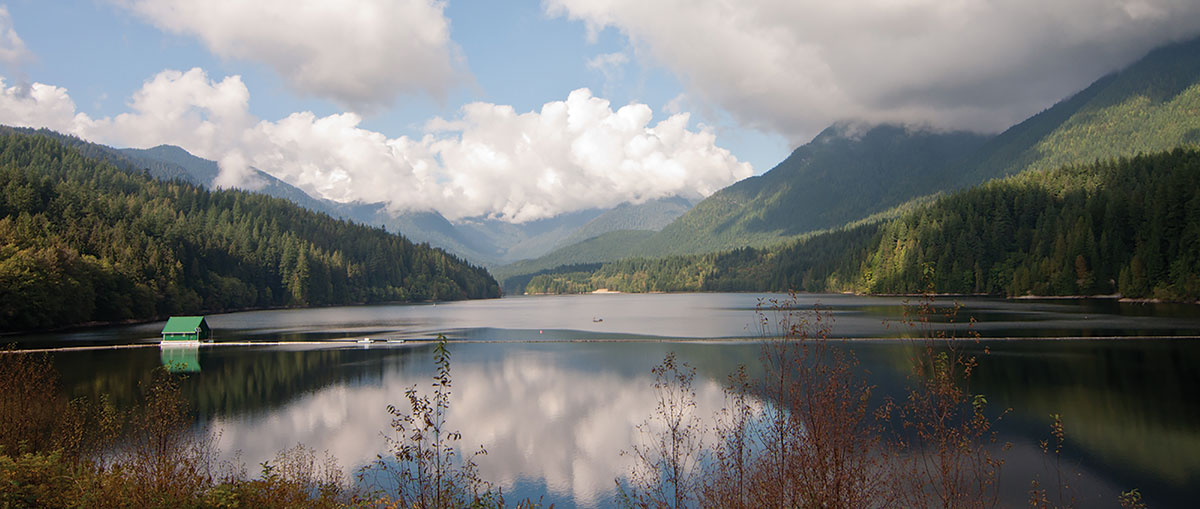
Capilano River Regional Park, B.C.
- Where: North Vancouver, British Columbia
- Salmon of note: Chinook, coho
- When: October, November
- Fee: None.
While not as well known as the park with the heart-stopping pedestrian suspension bridge just upriver, this park in the suburb of North Vancouver is a great destination for salmon fans. The Capilano Salmon Hatchery has viewing windows through which you can see salmon returning to spawn. The hatchery also has some fine educational displays about the life cycle. And then you can take to the trails and view the Capilano River surging through the dramatic Capilano Canyon.
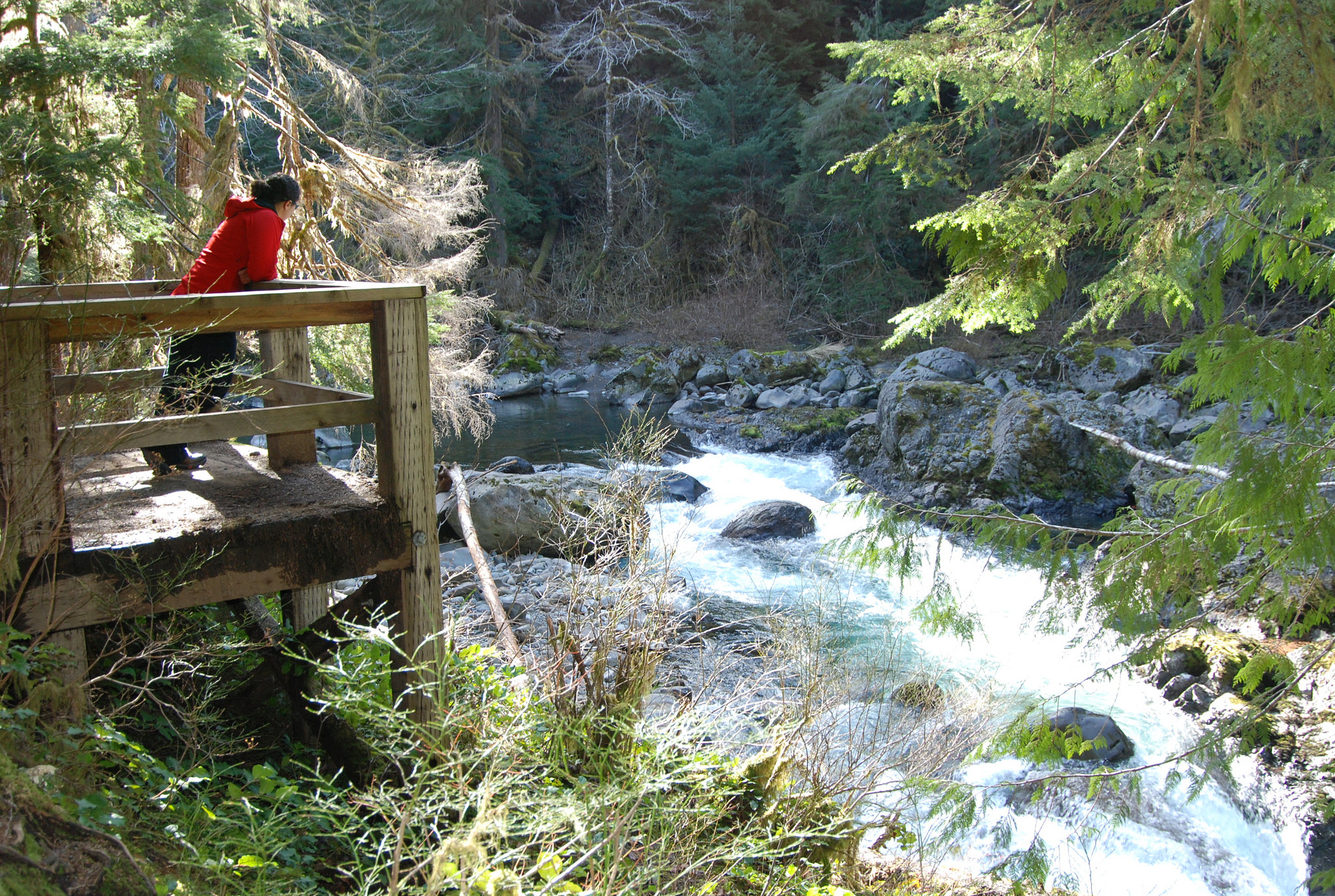
Sol Duc River Salmon Cascades
- Where: Northwest corner of Olympic National Park
- Salmon of note: Coho
- When: Mid-October until early November
- Fee: National Park entry fee ($20 per car)
If you are lucky enough to find yourself in the western part of Olympic National Park while the coho are running, make sure you visit this spot overlooking a series of rapids and falls on the Sol Duc River. This is the perfect vantage point to gawk at coho salmon leaping to get to the upper reaches of the rivers and streams where they spawn. Even though they stop eating and their bodies start shutting down once they enter the river, a coho can still leap more than 6 feet.

Skagit River Eagle Trail
- Where: Howard Miller Steelhead County Park, Marblemount Hatchery, milepost 100 rest area on Highway 20
- Salmon of note: Chum, coho
- When: December and January
- Fee: none
When the fish come to the river, other animals follow. In the Skagit, that means eagles — hundreds of them, winter migrants from as far away as Alaska. These, in turn, attract birders. Some volunteer to count the eagles, finding numbers ranging from 100 to more than 400 on a stretch of the Skagit from Marblemount to Rockport. Others set up birding telescopes, don high-end binoculars and hang out, volunteering to answer questions from members of the public, and show them the giant birds on river sand bars and in cottonwood trees. If you go, be sure to wear lots of layers. Birding is chilly. Also, check out the Skagit River Bald Eagle Interpretive Center in Howard Miller Steelhead County Park.
Brackendale, B.C.
- Where: Outside Squamish, British Columbia
- Salmon of note: Chum, coho
- When: December and January
Another great gathering of salmon-eating bald eagles is at the Squamish and Cheakamus rivers, which converge at Brackendale Eagles Provincial Park, near Squamish, British Columbia, just off the Sea to Sky Highway. The peak of the eagle gathering is usually in early January. If you are on your way to Whistler about that time, it’s worth a look.
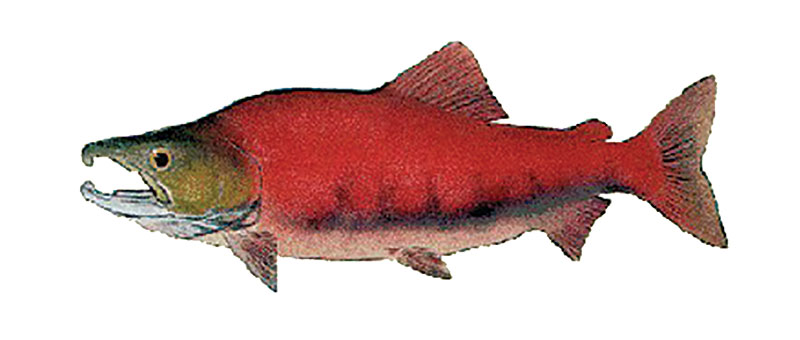
Salmon 101
Pink: General spawning time: August and September of odd-numbered years. Appearance at spawning: small, with green backs and silver bellies; males have pronounced humps.
Chum: General spawning time: November and December. Appearance at spawning: green and pink stripes.
Coho: General spawning time: October and November for fall runs. Appearance at spawning: bright pink bodies, green backs.
Chinook: General spawning time: depends on the population and the river; winter, spring, summer and fall runs exist. Appearance at spawning: mostly green, sometimes with a bit of pink.
Sockeye: General spawning time: August, September, October. Appearance at spawning: red bodies, green heads.
Kokanee: Landlocked populations of sockeye salmon that spend their adulthoods in lakes rather than the ocean. General spawning time: September through November. Appearance at spawning: similar to sockeye, crimson with a green head, sometimes black.
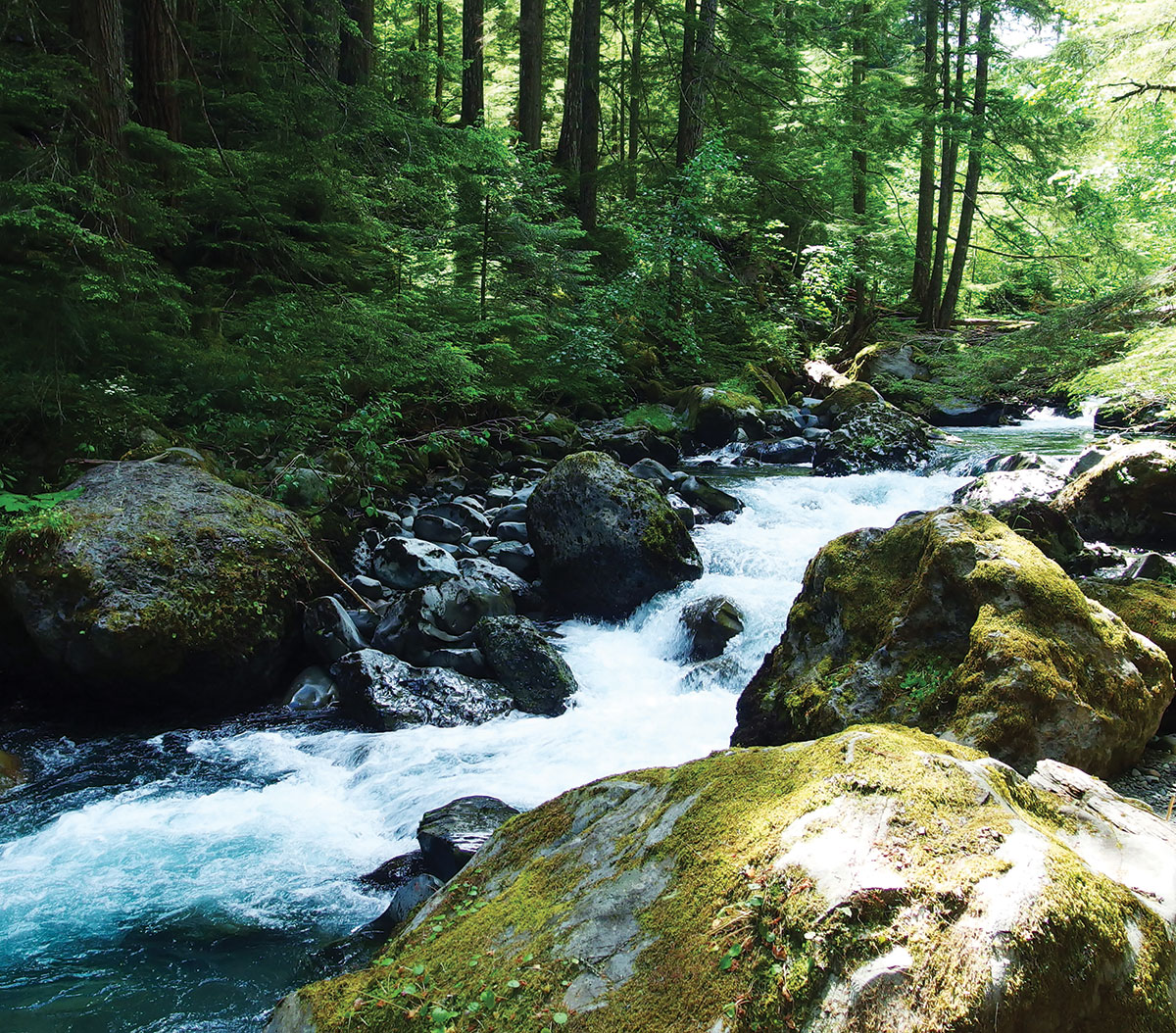
Dungeness River
- Where: Railroad Bridge Park in Sequim, or trails near the Dungeness Hatchery, 1261 Fish Hatchery Road, Sequim
- Salmon of note: Pink
- When: Mid-August through early November
- Fee: none
In 2013, this Olympic Peninsula river hosted its biggest run of pink salmon in 50 years, with as
many as 100,000 fish counted in the river at one time. This year, the offspring of those fish return home. It should be a big show. One stop you must make: Railroad Bridge Park in Sequim, home to the Dungeness River Audubon Center, which runs programs including a festival on the weekend of Sept. 25–26. Further upriver, visit the Dungeness Hatchery, where you can wander trails that allow you to explore the riverbank and watch the action.
Just to the west, the Elwha River has salmon, too — a few hardy stocks that survived a century of being dammed, plus a few introduced ones. One year after demolition crews blew up the last part of the last dam, the numbers of returning salmon are modest, but conservationists are optimistic. A good place to witness the recovery in progress is by the bridge where U.S. Highway 101 crosses the river.
MORE FANTASTIC FALL ADVENTURES
- Salmon-spotting at urban creeks around Seattle
- Apple-picking spots around Seattle







